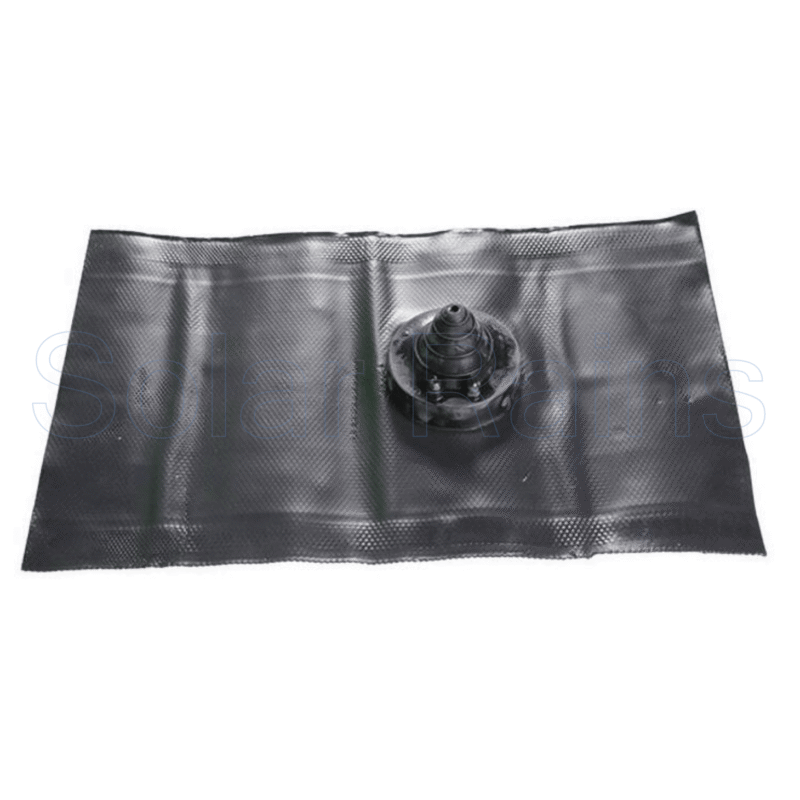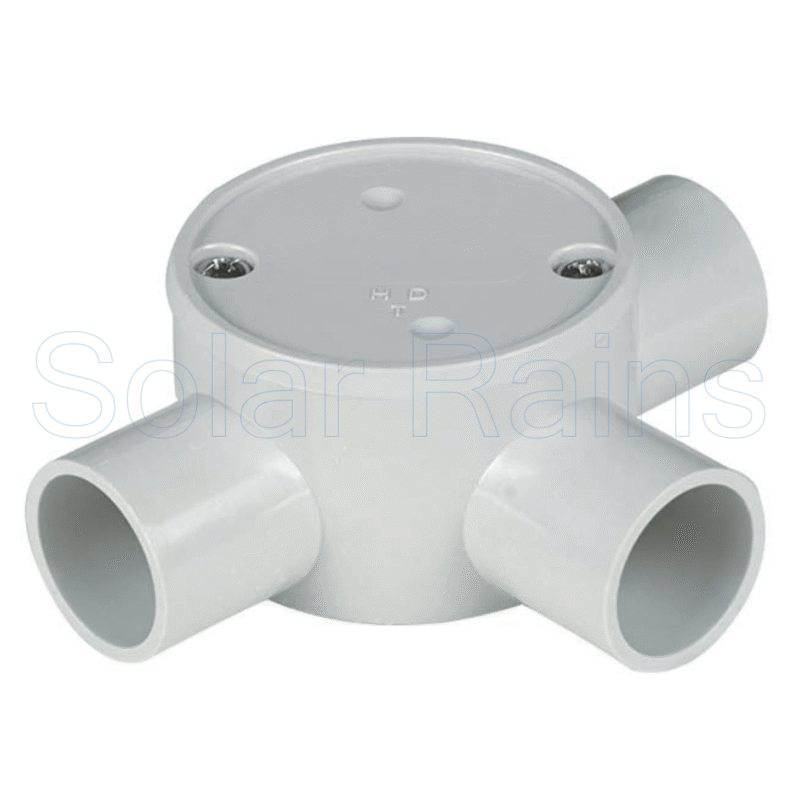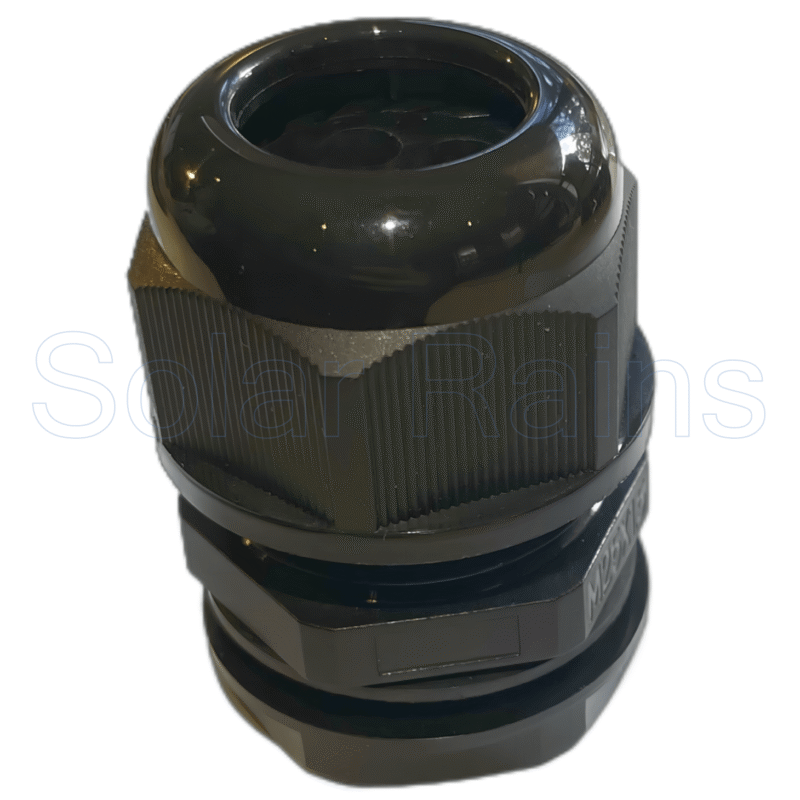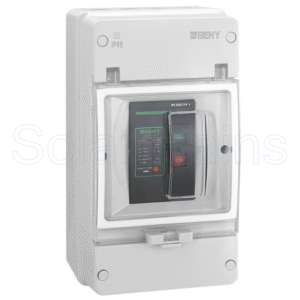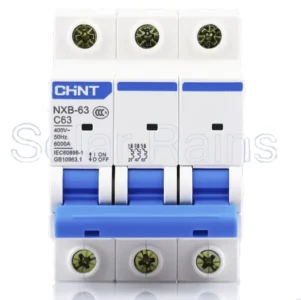Circuit Breaker PRODUCTS AT SOLAR RAINS
What Is a Circuit Breaker and Why It Matters?
A circuit breaker is a vital safety device that automatically interrupts electrical flow in a system when an overload or short circuit is detected. It serves as both a protective mechanism and a system management tool, preventing damage to wiring, equipment, and connected solar components.
In solar applications, circuit breakers are essential across various points in the system—including between the solar inverter and the distribution board. They offer a faster and more reliable response than traditional fuses, ensuring consistent system safety and reducing fire hazards.
Whether for residential rooftops, commercial facilities, or large-scale solar farms, properly rated circuit breakers are mandatory for any compliant solar installation under Australian electrical standards.
Why Circuit Breakers Are Essential in Solar Power Systems
The integration of solar energy into Australia’s power landscape means more electrical infrastructure operating under high load, variable input, and complex grid interaction. Circuit breakers play a key role in:
- Preventing electrical fires due to short circuits, ground faults, and overloads.
- Protecting valuable equipment like inverters, batteries, and panels from damage.
- Ensuring compliance with AS/NZS 3000 and AS/NZS 5033 wiring regulations.
- Facilitating maintenance by isolating system segments safely.
- Minimising system downtime during electrical faults.
At Solar Rains, we supply a carefully selected range of solar circuit breakers built for performance, durability, and local compliance.
Types of Circuit Breakers Offered by Solar Rains
Based on the product catalog at solarrains.com.au, we provide several categories of circuit breakers designed for solar and industrial use:
1. Miniature Circuit Breakers (MCBs)
Miniature Circuit Breakers are the most common type used in residential and light commercial systems. They offer short-circuit and overload protection, typically available in 1-pole, 2-pole, or 3-pole variants. Rated for AC operation, they are installed downstream from the inverter to protect connected circuits and appliances.
Use case: Residential solar inverters, switchboards, lighting circuits.
2. DC Circuit Breakers
These are specially engineered to handle the direct current (DC) output from solar panels. DC breakers are crucial in high-voltage systems, ensuring controlled interruption and arc suppression under challenging current flows. They are often installed between the solar array and the inverter or within battery enclosures.
Use case: PV arrays, battery banks, DC isolator boxes.
3. Industrial and Modular Circuit Breakers
For commercial-scale systems, modular breakers with high interrupt ratings are used in distribution panels. These are designed for three-phase loads and are suitable for continuous operation under higher amperage levels.
Use case: Warehouses, factories, solar farms, EV charging infrastructure.
Leading Circuit Breaker Brands at Solar Rains
We supply top-tier brands that are widely trusted across Australia’s solar and electrical industry:
Chint Circuit Breakers
Chint is a globally recognized brand offering reliable and cost-effective circuit protection devices. Known for their high durability, Chint breakers are used in both residential and commercial solar applications. Their range includes:
- MCBs with AC protection (up to 63A)
- DIN rail-mounted breakers for compact switchboards
- High-quality thermal-magnetic trip units
Chint is especially popular among installers looking for balance between performance and affordability.
ZJ Beny Circuit Breakers
ZJ Beny, known for its solar isolators and protection devices, also offers circuit breakers engineered for photovoltaic systems. Their DC breakers are designed for voltages up to 1500V, meeting strict PV safety requirements.
Features include:
- Flame-retardant enclosures
- Wide range of current ratings
- High fault tolerance for solar arrays
How to Choose the Right Circuit Breaker for Your System
Choosing the correct circuit breaker requires more than just matching current ratings. Below are several critical factors:
1. Voltage Type (AC or DC)
Ensure compatibility with the system. AC circuit breakers protect the inverter’s output side, while DC breakers are designed to interrupt unidirectional current from panels or batteries.
2. System Size and Load
Calculate the total expected current and select a breaker rated 25–30% higher to account for occasional surges. Overrating too much, however, may reduce protection effectiveness.
3. Trip Curve and Application
Trip curves (B, C, D types) determine how quickly the breaker trips during overload. Use Type C for inductive or moderate-load solar systems; Type B may be sufficient for low-load residential setups.
4. Installation Environment
Outdoor or dusty installations require enclosures or IP-rated products. Temperature and humidity can affect breaker performance, so choose components tested for Australian conditions.
5. Compliance and Certification
Only use breakers that are certified to IEC 60898 or AS/NZS 60947 standards. Solar Rains supplies products with full certification and warranty support.
Why Choose Solar Rains for Circuit Breakers?
At Solar Rains, we supply high-performance circuit breakers tailored to modern solar applications. Our products are carefully selected based on:
- Reliability: Trusted brands like Chint and ZJ Beny
- Compliance: All breakers meet AS/NZS standards
- Availability: Stock held locally in Australia
- Support: Fast delivery and technical assistance
We serve both residential installers and commercial contractors across the country, ensuring that every circuit breaker sold through our platform meets the highest safety and operational standards.
Frequently Asked Questions (FAQs)
- Can I use regular AC circuit breakers in solar applications?
Not always. Solar systems—especially those with batteries or high-voltage PV strings—require DC-rated circuit breakers to manage unidirectional current safely. Using the wrong type can lead to system failure or fire risks. - What is the difference between MCB and MCCB?
MCBs (Miniature Circuit Breakers) are used for lower-current applications, typically under 100A. MCCBs (Moulded Case Circuit Breakers) handle higher loads, making them suitable for large-scale commercial or industrial installations. - How many circuit breakers are needed in a solar system?
This depends on the system design. Typically, one breaker protects the inverter output, another may be used between the panels and inverter (DC side), and others protect sub-circuits or battery components. - Are Chint circuit breakers reliable for solar use?
Yes. Chint circuit breakers meet international standards, offer competitive pricing, and are widely used in the Australian market for both residential and commercial applications. - How do I know if my circuit breaker is tripping due to a solar issue?
If the breaker frequently trips during peak sun hours or inverter activity, it may be undersized or the system may be producing fault conditions. A licensed solar technician should perform a diagnostic check.

